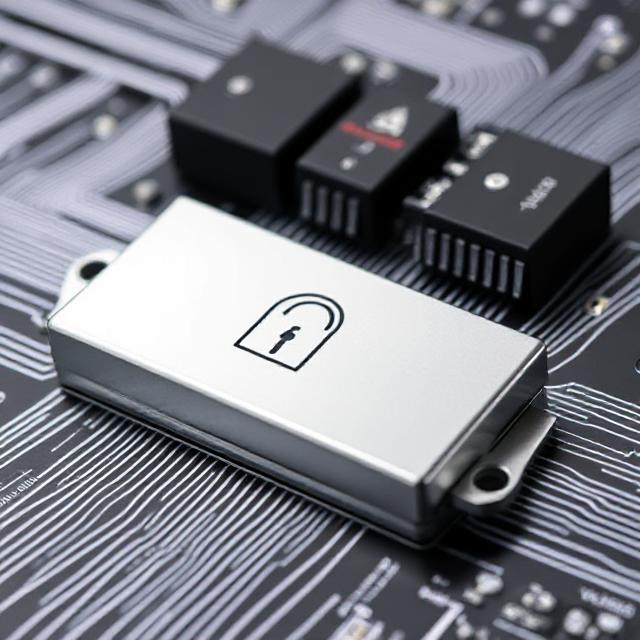The Locked Down Automobile: How Proprietary Code Created a Repair Monopoly
The modern automobile has quietly transformed from a mechanical device into a rolling computer network, one where every system from your door locks to your brake calipers is governed by proprietary software. This fundamental shift has created an automotive ecosystem where manufacturers maintain absolute control through digital rights management, encrypted firmware, and proprietary diagnostic protocols. The result is a dangerous erosion of consumer rights that threatens everything from basic repair access to long-term vehicle security.
Far from accidental, the automotive industry's resistance to open-source software is a calculated business strategy. Automakers have watched as open platforms revolutionized adjacent industries (smartphones with Android, web browsers with Firefox, servers with Linux) while carefully ensuring automobiles remain the last bastion of proprietary control. Their weapon of choice is the argument that safety and security require closed systems, but their real motivation is the $1.6 trillion global aftermarket they're desperate to reclaim through digital lockouts.
The Technical Barriers To Automotive Open Source

At the heart of this issue lies a complex web of technical obstructions designed to prevent independent software access. Modern vehicle architectures employ multiple layers of protection.
The hardware security module (HSM) acts as a digital gatekeeper, verifying all software before execution. These cryptographic processors, similar to those in smartphones and game consoles, require manufacturer-signed certificates for any firmware updates. Even if a developer could access the source code (which they can't), the HSM would reject any unauthorized modifications.
Controller Area Network (CAN) protocols, the nervous system connecting vehicle components, now implement authentication routines that prevent unofficial devices from communicating with critical systems. This means aftermarket parts ranging from alternators to window motors must contain manufacturer-approved firmware to function.
Most insidiously, automakers have implemented parts pairing, a system where components like infotainment units or body control modules cryptographically authenticate with the vehicle's central gateway. Replace a component without the factory tool, and the car may disable features or even refuse to start. Tesla has taken this furthest, with components like the touchscreen being cryptographically married to individual vehicles.
The Right-to-Repair War Being Lost In Code

The consequences of this closed ecosystem extend far beyond enthusiast tinkering. Independent repair shops, who service 70% of vehicles outside warranty, increasingly find themselves locked out of basic maintenance procedures.
This figure comes from multiple industry sources, including the Auto Care Association and the Global Right to Repair movement, which emphasize the vital role these shops play in maintaining the majority of the 1.5 billion vehicles on the road globally. This is especially important in light of the ongoing debate over Right to Repair laws, as automakers and independent shops negotiate access to diagnostic data and repair tools.
Modern diagnostics now require manufacturer-approved software subscriptions costing thousands annually, with some automakers like Mercedes implementing pay-per-use models for certain functions. This means that even after purchasing the diagnostic software, technicians may need to pay additional fees to access certain features like control unit programming, flashing, or advanced troubleshooting tools.
Farmers in rural America face particularly acute challenges. John Deere's fight against tractor right-to-repair (using similar software locks) foreshadowed what's coming to passenger vehicles.
John Deere has used software locks and proprietary diagnostic tools to restrict farmers from repairing their own tractors, sparking widespread backlash and even underground hacking communities. This model, where ownership doesn’t guarantee repair rights, has foreshadowed similar trends in the auto industry, where modern vehicles increasingly require manufacturer-approved software for diagnostics and repairs.
Deere’s approach has become a blueprint for digital control—and a rallying cry for the broader Right to Repair movement. Today, a simple transmission fluid change on some luxury vehicles requires proprietary software to reset maintenance counters, software only available through dealer channels.
Barely ten years ago, this would have sounded preposterous, but we're living in a world where brands like Volvo, Mercedes-Benz, and BMW often require manufacturer-specific diagnostic software to reset transmission fluid counters or perform adaptation resets after a fluid change.
In 2015, most routine maintenance tasks—like fluid changes, brake service, or spark plug replacements—were still largely mechanical in nature. While software had begun playing a role in diagnostics, it hadn’t yet become the gatekeeper for basic service procedures it has now become. Independent repair shops could handle a wide range of maintenance without paying thousands for OEM access or navigating digital locks.
Fast forward to today, and we’re in a world where even resetting an oil change indicator can require paid access to a manufacturer’s server. That shift has been swift, and to many, jarring. It’s a classic example of how vehicle ownership is being redefined through software.
For example, Volvo’s VIDA system and Mercedes’ XENTRY are proprietary platforms typically only accessible via dealer channels or through expensive subscriptions. These resets are important because the transmission control module (TCM) uses fluid degradation counters to adjust shift logic and pressure settings. If not reset, it can lead to suboptimal performance or even warning lights.
This brazen trend is part of a broader shift toward software-controlled maintenance. The security implications are equally troubling. Researchers have demonstrated that proprietary automotive systems often contain vulnerabilities that persist for years because independent experts can't audit the code. The Jeep Cherokee hack of 2015, where researchers remotely disabled a vehicle's brakes, exploited vulnerabilities that might have been caught and fixed sooner in an open-source model.
Automakers Will Never Voluntarily Open Up

The financial incentives maintaining the status quo are enormous. Tesla has proven the profitability of software-defined vehicles, generating billions from premium connectivity subscriptions, in-app purchases, and performance unlocks.
Traditional automakers are racing to emulate this model. General Motors (GM) is actively pursuing a similar model. It has publicly projected $20–$25 billion in annual software and services revenue by 2030, driven by its Ultifi platform, which enables over-the-air updates, subscription features, and connected services across millions of vehicles.
This shift reflects a broader industry trend: automakers are no longer just building cars; they’re building platforms for recurring digital revenue. Going from selling products to providing services depends entirely on maintaining software control. Open-source platforms would destroy these nascent revenue streams by:
- Eliminating paywalls for features like heated seats or acceleration boosts
- Enabling third-party app stores that bypass manufacturer marketplaces
- Allowing vehicle-to-grid integration without automaker intermediaries
- Preventing data monetization from driving behavior analytics
Perhaps most damningly, open-source software would expose how little differentiation exists between manufacturers' proprietary systems. Most infotainment platforms are built on the same few underlying architectures (often Android Automotive or QNX), with proprietary skins creating artificial brand differentiation.
The Dangerous Future Of Closed Automotive Ecosystems
As vehicles become more software-dependent, the risks of closed systems multiply.
Software obsolescence presents a looming crisis. Automakers have little incentive to support older vehicles when they can't monetize them. Already, early "connected" cars are losing functionality as 3G networks sunset and manufacturers decline to provide updates.
As 3G networks have been shut down, many early connected vehicles—those relying on 3G modems for services like emergency assistance, remote start, and navigation updates—have lost functionality. Some automakers, like GM, Honda, and Subaru, offered software or hardware upgrades to transition affected vehicles to 4G LTE. But others, including Mercedes-Benz, Toyota, and Nissan, declined providing updates, leaving owners without key features.
A more open software model could allow community-driven support to extend the lifespan of these vehicles, much like open-source platforms do for older smartphones and computers.
Secondly, security vulnerabilities in proprietary systems often go unpatched. The 2022 discovery of a vulnerability affecting millions of vehicles through their SiriusXM connections demonstrated how closed systems create single points of failure.
In late 2022, cybersecurity researchers, including Sam Curry, discovered a serious vulnerability in SiriusXM’s Connected Vehicle Services, used by over 10 million vehicles across brands like Honda, Nissan, Infiniti, Acura, BMW, Hyundai, Toyota, and others.
The flaw allowed attackers to remotely unlock doors, start engines, locate vehicles, and access personal data - all by exploiting a weakness in how the system authenticated requests using only a vehicle’s VIN (Vehicle Identification Number). SiriusXM quickly patched the issue, but the incident highlighted the risks of centralized, closed telematics platforms, where a single vulnerability can expose millions of vehicles across multiple brands.
Open-source advocates argue that transparency leads to more robust security - a principle proven in everything from web browsers to operating systems.
Perhaps most alarmingly, closed automotive software enables new forms of manufacturer control. Tesla has already demonstrated the ability to remotely disable features or limit functionality. It's only a matter of time before EVs in China restrict operation based on social credit scores.
The nation’s Social Credit System already impose real-world consequences like travel restrictions or limited access to financial services for individuals or businesses with poor credit standing. That said, the China’s social credit framework is evolving rapidly, and its integration with connected vehicle platforms, which already collect vast amounts of driver data, raises legitimate questions about future use cases. Without open alternatives, consumers have no recourse against such overreach.
A Glimmer of Hope?

Despite overwhelming opposition from manufacturers, open-source automotive projects are gaining traction in niche areas. The Open Vehicle Monitoring System (OVMS) provides an open platform for EV telemetry and control, offering an alternative to manufacturer apps. Developed initially for older Tesla Roadsters, it now supports multiple EV models.
The comma.ai project has created open-source driver assistance systems that challenge proprietary offerings like Tesla Autopilot. While limited by manufacturer-imposed restrictions, it demonstrates the potential for community-developed automotive software.
In the industrial sector, the AGCO Open-Source Alliance shows agricultural equipment manufacturers collaborating on open tractor software, a model that could theoretically transfer to passenger vehicles.
These projects are exceptions in an industry dominated by proprietary control, but they prove open automotive software isn't technically impossible; just commercially unpalatable to manufacturers.
The Road Not Taken
The dirtier truth from the auto industry's refusal to embrace open-source software is the fundamental betrayal of user autonomy. It's worse than just a business decision. In an era where transparency and user control are recognized as essential for security and innovation, cars remain stubbornly opaque.
This closed approach comes with real costs: stifled innovation, unnecessary e-waste from prematurely obsolete vehicles, and dangerous security monocultures. Most fundamentally, it represents a loss of ownership, the idea that when you buy a car, you should control how it operates.
Until either regulation forces openness (as happened with OBD-II in 1996) or a major manufacturer breaks ranks (as Tesla briefly considered with its early patents), the dream of truly open automotive software will remain just that - a dream. In the meantime, our vehicles will continue becoming less ours and more theirs with every software update.